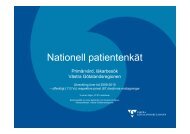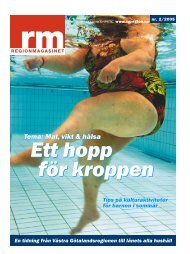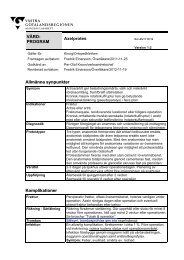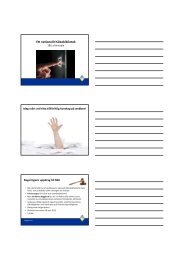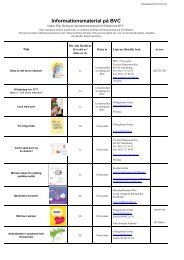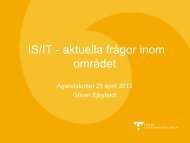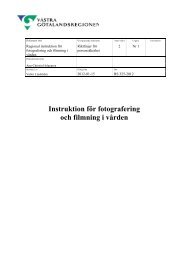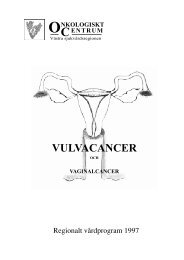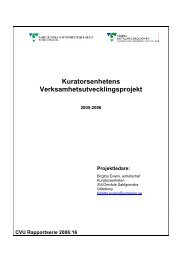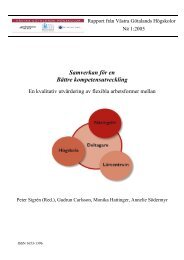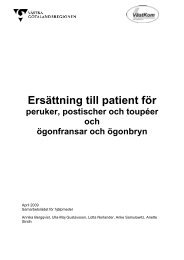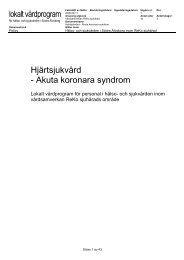FOURTEENTH ANNUAL EUROPEAN PRESSURE ULCER ...
FOURTEENTH ANNUAL EUROPEAN PRESSURE ULCER ...
FOURTEENTH ANNUAL EUROPEAN PRESSURE ULCER ...
Create successful ePaper yourself
Turn your PDF publications into a flip-book with our unique Google optimized e-Paper software.
Thursday September 1st<br />
Proceedings of the 14th Annual European Pressure Ulcer Meeting<br />
Oporto, Portugal<br />
The TexiSense « Smart Sock » - Textile Pressure Sensor and 3D Real-time Finite Element<br />
Model of the Diabetic Foot for a Daily Prevention of Pressure Ulcers<br />
Introduction<br />
M. Bucki 1*,3 , N. Vuillerme 2 , F. Cannard 3 , B. Diot 4 , G. Becquet 5 , Y. Payan 1<br />
1* TIMC-IMAG, Université Joseph Fourier, La Tronche, France, marek.bucki@imag.fr,<br />
2 AGIM FRE 3405 CNRS, Université Joseph Fourier, EPHE, La Tronche, France,<br />
3 TexiSense, www.texisense.com, Montceau-les-Mines, France,<br />
4 IDS, Montceau-les-Mines, France, 5 Centre de l’Arche, Saint Saturnin, France.<br />
The term « diabetic foot » refers to a set of foot<br />
pathologies essentially stemming from the neuropathy<br />
and arteriopathy of the lower limb associated with<br />
diabetes mellitus. Chronic ischemia weakens the<br />
healing potential and favours the development of<br />
wounds on a more vulnerable foot. Friction or repeated<br />
micro-traumas can lead to an ulceration (which in turn<br />
can end up in an amputation) that will remain<br />
unnoticed because of the somato-sensory deficiency.<br />
The current prevention techniques largely relying on<br />
visual inspection of the foot and enhancement of the<br />
foot/insole interface are not fully satisfying as the<br />
prevalence of plantar ulcers remains very high [1].<br />
Methods<br />
A device for the prevention of plantar ulcers – called<br />
“Smart Sock” is described. It consists of (cf. Fig. 1):<br />
1. A sock made of a 100% textile pressure sensing<br />
fabric developed by the TexiSense company;<br />
2. A microcontroller running a biomechanical model of<br />
the soft tissues of the foot of the diabetic person;<br />
3. A vibrating watch (or a smartphone) used to warn<br />
the bearer if an overpressure pattern threatens the soft<br />
tissues integrity.<br />
Fig. 1: Overview of the “smart sock” device.<br />
Internal overpressures within the soft tissues,<br />
especially nearby bony prominences are likely to<br />
evolve into deep foot ulcerations. A linear Finite<br />
Element biomechanical model of the foot is used to<br />
compute estimates of internal pressures magnitudes<br />
based on the external pressures measured by the<br />
sock/sensor. The device sends a vibro-tactile alert in<br />
case of occasional overpressure or excessive stress<br />
dose accumulated during daytime activities.<br />
Thanks to the linear nature of the model its global<br />
deformation can be computed as a linear combination<br />
of a set of elementary deformations pre-computed offline<br />
and stored in the device memory [2].<br />
87<br />
Results<br />
Internal stresses and stress doses are estimated in<br />
real-time as the pressure values reading and the Finite<br />
Element model update require less than 100<br />
milliseconds. Figures 2 and 3 show a colormap of the<br />
Von Mises equivalent internal stress on a sagittal slice<br />
within the 3D model of the foot.<br />
Fig. 2: Internal pressure patterns in forefoot stance.<br />
Fig. 3: Internal pressure patterns at heel contact.<br />
Discussion<br />
The TexiSense “Smart Sock” can be designed so that,<br />
when worn, pressure sensors fall onto sensitive<br />
anatomical areas such as the dorsal side of the toes or<br />
the posterior side of the heel, which makes it also<br />
possible to monitor regions located outside the sole of<br />
the foot.<br />
Clinical relevance<br />
The continuous use of the device, compatible with<br />
daytime activities of the diabetic person, helps<br />
compensate for the lack of attention in the prevention<br />
of pressure ulcer formation.<br />
Acknowledgements<br />
This project is supported by ANR Tecsan 2010 and the<br />
Techtera competitiveness pole.<br />
Conflict of Interest None.<br />
References<br />
[1] Boulton, A.J.M, et al. The global burden of diabetic<br />
foot disease. The Lancet, Vol. 366, pp. 1719-1724,<br />
2005.<br />
[2] Cotin S. et al. Real-time elastic deformations of soft<br />
tissues for surgery simulation. IEEE Trans. on Vis. and<br />
Comp. Graphics, 5(1), pp. 62-73, 1999.<br />
Copyright © 2011 by EPUAP



